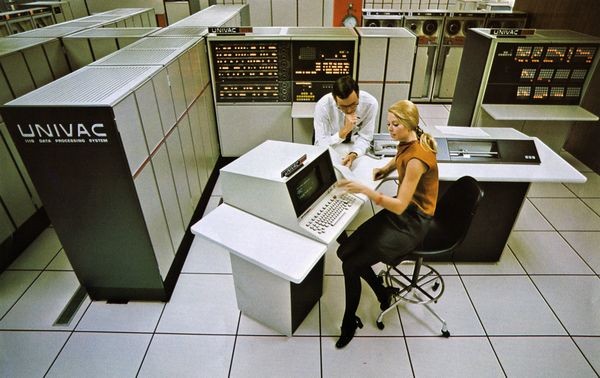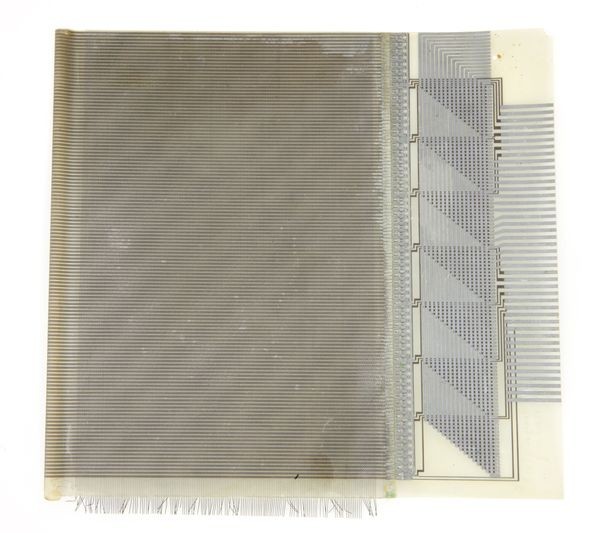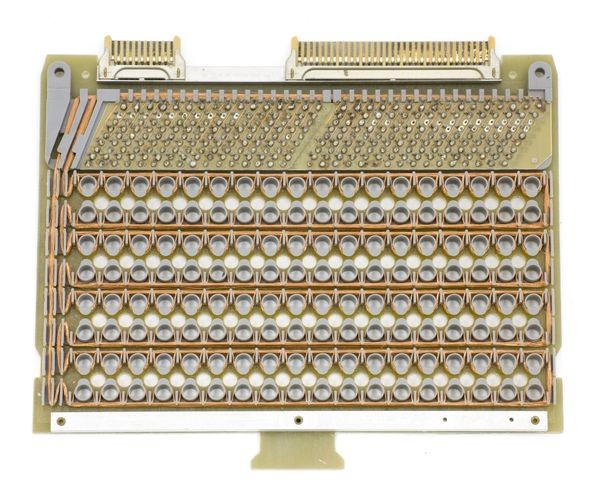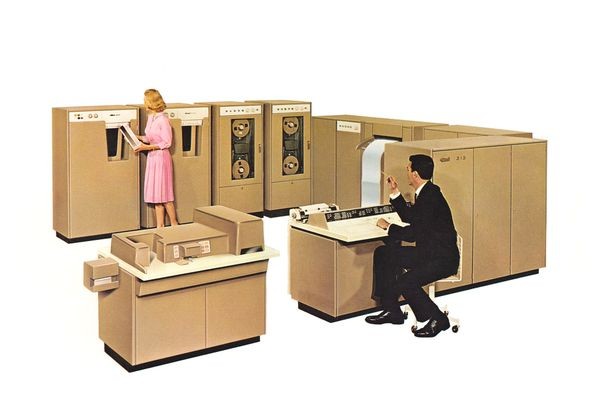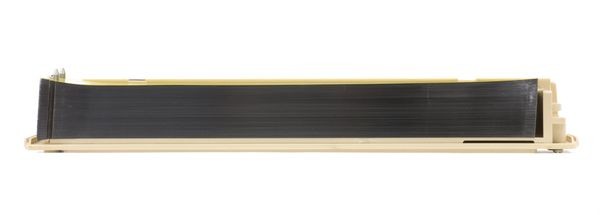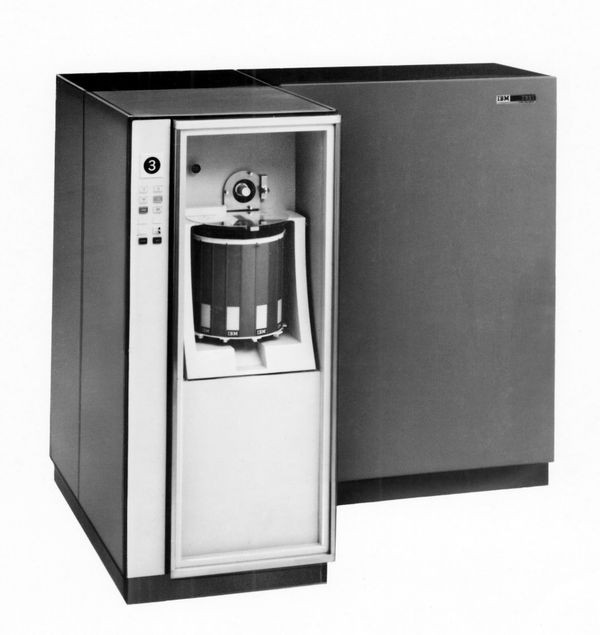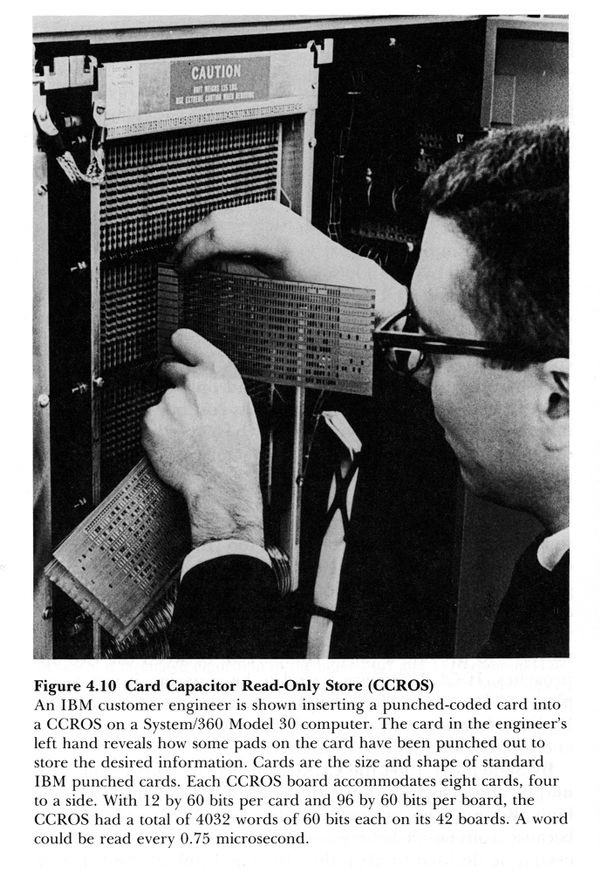Innovative Ideas & Stepping Stones Part II
Remington Rand UNIVAC 1110
The 1110 was one of the very few computers to use plated wire memory, which was faster than core.
Innovative Ideas & Stepping Stones
Necessity is the mother of invention. But not all her offspring end up equally successful.
Computer engineers recognized the need for efficient, reliable, affordable memory and storage. Many devised solutions, often attracting supporters who invested considerable money and time. Some ideas worked. Others fizzled, yet served as valuable stepping-stones to later technologies. And many, ultimately, proved creative dead ends.
Plated Wire Memory
Bell Labs began developing this variation on core memory in 1957. Straight wires had separately magnetized areas. Unlike traditional core memory, it could be machine assembled instead of hand-wired. The Viking Mars lander and Hubble Space Telescope used plated wire memory.
Plated wire memory
This plated wire memory was used in an improved US Minuteman III missile computer.
View Artifact DetailNixdorf Rod Cell Read-Only Memory
Also called “magnetic stick” memory,” this technology featured a board studded with 144 vertical rods of wire coil. If one of its 256 hand-threaded wires went around a rod, it represented a “one.” Threaded past a rod, it represented a “zero.”
Nixdorf 820 minicomputer
This successful small business computer used rod cell (“magnetic stick”) memory to permanently store its operating system. Fixing software bugs was a problem, however.
View Artifact DetailNixdorf 820/23 rod cell memory board
The operating system of the Nixdorf 820 business computer was stored in ROMs like this.
View Artifact DetailCard Random Access Memory (CRAM)
Mylar magnetic cards, each holding 21,700 characters, were assembled in “files” of 256 cards. Notched edges enabled individual cards to be individually selected and wrapped around a spinning drum. Failure—not uncommon—produced a spectacular mess and destroyed data.
NCR 315 CRAM File
The NCR 315 and several later NCR mainframes used the mechanically complex magnetic Card Random Access Memory (CRAM) for secondary storage.
View Artifact DetailCard Random Access Memory (CRAM)
The mylar cards were suspended from rods that selected and dropped one at a time for processing. Each CRAM deck of 256 cards recorded about 5.5 MB.
View Artifact DetailIBM Data Cell Drive
Seven years in the making, IBM’s 1964 Data Cell Drive stored up to 400 MB. Wide magnetic strips were plucked from bins and wrapped around a rotating cylinder for reading and writing.
Reliability problems plagued the initial release, but after improvements it was used until 1976.
IBM 2321 Data Cell Drive
The Data Cell Drive was announced in 1964 with the System/360 mainframe computer. Allstate Insurance used one to store insurance policies.
View Artifact DetailCard Capacitor Read-Only Storage (CCROS)
The IBM System/360 Model 30 used CCROS to store microcode. It was a capacitor memory that could be programmed by punching holes in its Mylar card with a standard keypunch.
IBM Card Capacitor Read-Only Store (CCROS)
Changing a punched card in a System/360 Model 30 changed the microprogramming and therefore its overall capabilities. Changes could be done even in a customer’s office.
View Artifact DetailBalanced Capacitor Read-Only Store (BCROS) for microprogram
The microcode stored in this memory was used in IBM Models 50 and 65 mainframe computers to provide compatibility with other models in the System/360 family.
View Artifact Detail